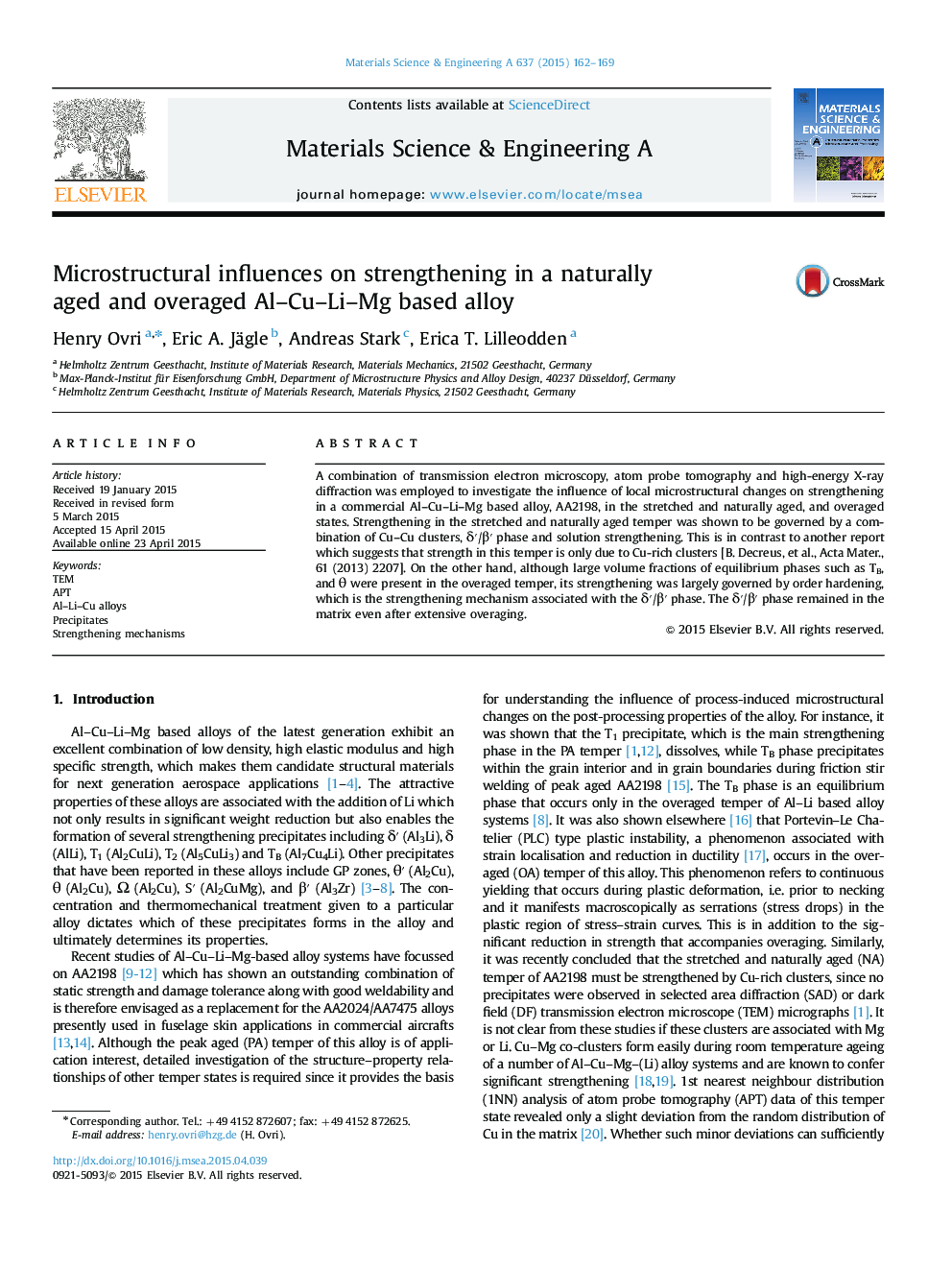| Article ID | Journal | Published Year | Pages | File Type |
|---|---|---|---|---|
| 1574384 | Materials Science and Engineering: A | 2015 | 8 Pages |
Abstract
A combination of transmission electron microscopy, atom probe tomography and high-energy X-ray diffraction was employed to investigate the influence of local microstructural changes on strengthening in a commercial Al-Cu-Li-Mg based alloy, AA2198, in the stretched and naturally aged, and overaged states. Strengthening in the stretched and naturally aged temper was shown to be governed by a combination of Cu-Cu clusters, δâ²/βⲠphase and solution strengthening. This is in contrast to another report which suggests that strength in this temper is only due to Cu-rich clusters [B. Decreus, et al., Acta Mater., 61 (2013) 2207]. On the other hand, although large volume fractions of equilibrium phases such as TB, and θ were present in the overaged temper, its strengthening was largely governed by order hardening, which is the strengthening mechanism associated with the δâ²/βⲠphase. The δâ²/βⲠphase remained in the matrix even after extensive overaging.
Related Topics
Physical Sciences and Engineering
Materials Science
Materials Science (General)
Authors
Henry Ovri, Eric A. Jägle, Andreas Stark, Erica T. Lilleodden,
